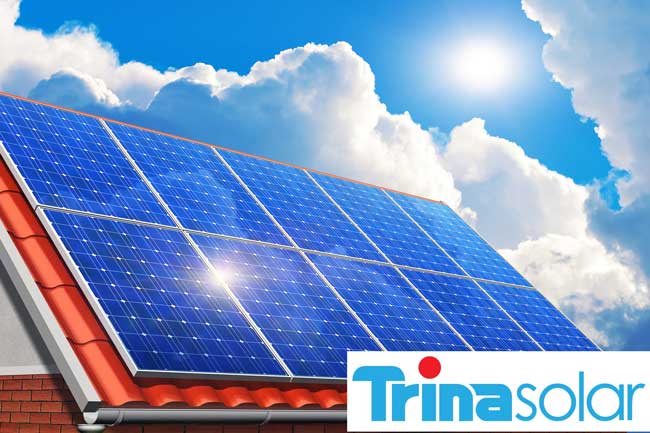
Trina Solar Panel Efficiencies Keep On Rising,
Trina Solar panels look set for a big 2016 with news that the company has achieved yet another solar cell efficiency record.
Fresh from trouncing its previous record for efficiency for a p-type polycrystalline silicon solar cell, Trina Solar announced last week they had achieved an efficiency of 22.13 percent for a 156 x 156mm² solar cell for a mono-crystalline silicon (c-Si) solar cell. This beats the company’s previous record of 21.40 percent, set in November 2014.
The huge Chinese solar company is pumping out press releases faster than we have changes in prime ministers as it seeks to keep us informed of the latest breakthroughs.
According to the latest statement (watch out for a special mention of our very own UNSW) Trina has achieved the “… highest efficiency ever reported to date for a p-type industrial solar cell,” according to Dr. Pierre Verlinden, Trina Solar Vice-President and Chief Scientist.
“This Honey Plus solar cell, fabricated with a low-cost industrial process, sits on the efficiency scale which is just 2.87% below the world record of 25% established by the University of New South Wales with a 2x2cm2 laboratory solar cell,” he added.
As with the previous record, the results were independently tested and verified by the venerable Fraunhofer ISE CalLab, located in Freiburg, Germany. The lab is the largest of its kind in Europe, specialising in research on solar energy.
The good doctor goes on to summarise what has been a big 2015 for the Chinese-based company.
“In 2015, our R&D teams have achieved two significant records with PERC solar cell technologies: we reached an efficiency of 21.25% with multi-crystalline silicon PERC cells, followed a few weeks later with a 22.13% efficiency record for mono-crystalline silicon cells. This also demonstrates the enormous potential of p-type substrates.”
The announced breakthroughs in efficiencies in Trina solar panels is just one company’s example of the increased focus on research and development amongst leading cell manufacturers to push for increased efficiencies in p-type cell technology. Coupled with the anticipated roll out of battery storage technology, increasingly efficient solar panels look as if they will drive an immense year for solar energy in 2016.
Happy New Year everyone!

 RSS - Posts
RSS - Posts



Efficiencies are important, but along with that it is the cost at which these solar panels are available, which is important too. Higher efficiency cells have been around and been used exclusively in space. In space every extra gm of weight counts, because of the cost associated with sending it into space. Thus, even the really expensive high efficiency cells are “affordable”.
What needs to be seen is how “affordable” these Trina cells are for the average homeowner with limited roof space? But then since its China and since its Trina, I am sure they are better placed at beating down the costs than anyone else in the world.